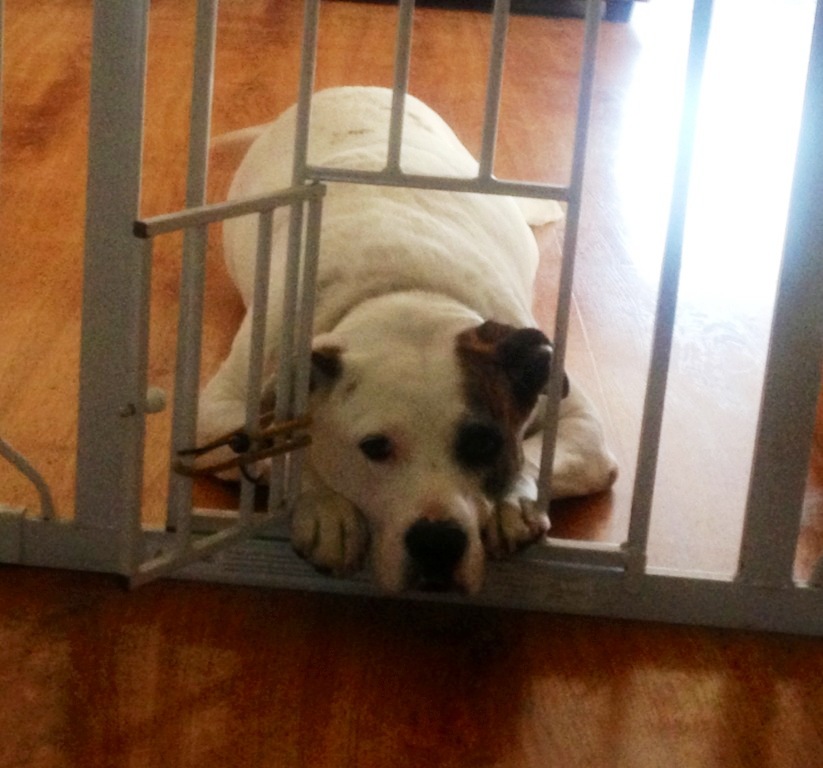Barks Blog
Taming the Beast
Written by Diane Garrod BSc, this article was originally published in BARKS from the Guild, June 2014.

Managing an aggressive dog is a permanent commitment but it is most definitely possible.
Owning an aggressive dog creates immediate liability. It is critical to use prevention and management whether your dog is at home, in the car or out on a walk. Managing an aggressive dog should be taken very seriously. It means making a clear commitment which involves never putting him in a situation where he will aggress again. This sounds easier than it is to implement, nevertheless it is the key to change.
Managing an aggressive dog includes:
- changing the dog’s environment
- providing exercise where aggression is not practiced
- providing mental stimulation
- training
- giving the dog a job
It should also include getting behavioral help to desensitize and counter-condition the dog to his triggers, but this article will focus on prevention and management. Managing an aggressive dog also means stopping all aversive punishment as aggression simply begets aggression. Positive reward-based methods should always be used to re-train the dog.
There are many so-called categories of aggression, from territorial to resource guarding and fear-based aggression. Each has its own set of protocols to change the behavior. However, aggression can also be genetic or created by health issues. Mostly though, it is exhibited – especially to humans – by a dog that is fearful and lacks self-confidence. Dogs tend to do what works and, if aggressive behavior has worked in the past, the dog will continue to aggress and the behavior often gets stronger and stronger.
Environment
The first step is to change the dog’s environment and set clear rules and boundaries, which is part of the process.
Take a good look at your dog’s environment. What rules and boundaries have you created?
Set up baby gates and create ‘no go’ areas in the house. Your dog should work his way into the household by showing he can follow the rules and boundaries you have set up. This is important in interactions with family members, just as it is with any visitors. You must educate your dog how to interact, teach him what is acceptable and help him learn that visitors are allowed to be there. Reward your dog for what he is doing right and do not take him past his threshold. This means that when a visitor arrives you must know what your dog’s comfort level is with each individual person. Safety is the prime concern where people are involved. Manage the interactions at all times and never leave an aggressive dog unsupervised.
What play area does your dog have and do you engage with him on a daily basis in games and training? Is there an area where he can just be a dog, where training can take place and games like ball and Frisbee can be played? Dogs need mental stimulation and engagement with their owners in various activities, whether that means trick training, problem solving mental activities or simply a game of Frisbee.
Consider where the dog’s safe zones are. Are there places where noise is minimal, where stress levels are low and sleep is encouraged? Music does soothe the savage beast. A safe zone is a place where a dog can go for at least an hour a day to unwind, refresh, be peaceful and be devoid of any overly stimulating action.
Avoidance
The more you avoid an aggressive dog’s triggers, the less he will practice aggressive behaviors and the stronger non-aggressive behaviors will become. If you can prevent all aggression-related activity and replace it with reward-based activity, you can have a better prognosis for changing your dog’s behavior.
Management of who he meets, when he meets them, where he goes, why he goes and what he learns is all up to you as his owner. If a dog’s behavior cannot be changed, then management will have to be a lifetime consideration to prevent aggression for the sake of zero liability.
With aggression, behavior modification is a wise decision. Behavior modification replaces bad behavior with good behavior. Working with a qualified behaviorist, veterinarian behaviorist or behavior trainer is a vital part of the toolbox. Management and prevention are a big part of the process. There are many steps to working with an aggressive dog and number one on your list should be to consult with a qualified professional. Managing your dog’s stress levels is essential to managing his aggressive behavior.

